
The Fifth Fleet is a numbered fleet of the United States Navy. It has been responsible for naval forces in the Persian Gulf, Red Sea, Arabian Sea, and parts of the Indian Ocean since 1995 after a 48-year hiatus. It shares a commander and headquarters with U.S. Naval Forces Central Command (NAVCENT) in Bahrain. Fifth Fleet/NAVCENT is a component command of, and reports to, U.S. Central Command (CENTCOM).
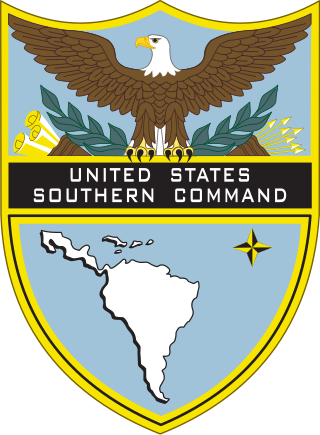
The United States Southern Command (USSOUTHCOM), located in Doral, Florida in Greater Miami, is one of the eleven unified combatant commands in the United States Department of Defense. It is responsible for providing contingency planning, operations, and security cooperation for Central and South America, the Caribbean, their territorial waters, and for the force protection of U.S. military resources at these locations. USSOUTHCOM is also responsible for ensuring the defense of the Panama Canal and the canal area.

The Organized Crime Drug Enforcement Task Force (OCDETF) is a federal drug enforcement program in the United States, overseen by the Attorney General and the Department of Justice. The principal mission of the OCDETF program is to identify, disrupt, and dismantle the major drug trafficking operations and tackle related crimes, such as money laundering, tax and weapon violations, and violent crime, and prosecute those primarily responsible for the nation's drug supply.

Law Enforcement Detachments or LEDETs are specialized, deployable maritime law enforcement teams of the United States Coast Guard. First established in 1982, their primary mission is to deploy aboard U.S. and allied naval vessels to conduct and support maritime law enforcement, interdiction, or security operations. LEDETs are the operational elements of the Coast Guard’s two Tactical Law Enforcement Teams (TACLETs) which were part of the Coast Guard’s Deployable Operations Group (DOG) from 2007 to 2013. As of April 2010 there are seventeen LEDETs.

Operation Southern Watch was an air-centric military operation conducted by the United States Department of Defense from Summer 1992 to Spring 2003.

Joint Task Force-Bravo is a forward-based expeditionary joint task force operating as U.S. Southern Command's (USSOUTHCOM) lead forward element in the Central America (CENTAM) region to promote stability and security and counter transnational and transregional threat networks (C-T3N). JTF-Bravo operates out of Soto Cano Air Base, Honduras, located 10 miles south of the city of Comayagua and 50 miles north of the capital city of Tegucigalpa.
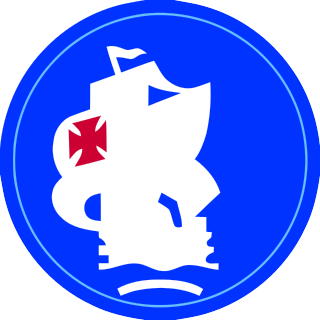
United States Army South is an Army service component command of United States Southern Command whose area of responsibility includes 31 countries and 15 areas of special sovereignty in Central and South America and the Caribbean. It is headquartered at Fort Sam Houston, Texas.
Maritime Security Regimes are codes and conventions of behavior agreed upon by coastal states to provide a degree of security within territorial waters and on the high seas.

Daniel B. Lloyd is a retired United States Coast Guard Rear Admiral. His last tour of duty in 2011, was as the Director of Joint Interagency Task Force South. Lloyd assumed the duties of Military Advisor to the Secretary, United States Department of Homeland Security, in June 2006. In this role, he was responsible for advising the Secretary on matters involving coordination between the Department of Homeland Security and all branches of the military.

The Philippine Drug Enforcement Agency is the lead anti-drug law enforcement agency, responsible for preventing, investigating and combating any dangerous drugs, controlled precursors and essential chemicals within the Philippines. The agency is tasked with the enforcement of the penal and regulatory provisions of Republic Act No. 9165, otherwise known as the Comprehensive Dangerous Drugs Act of 2002.

Exercise Northern Edge is a military joint training exercise conducted by the United States Armed Forces in the Gulf of Alaska. Alaskan Command (ALCOM) uses expansive Alaskan training ranges to conduct this joint training operation.

Samuel Perez Jr. is a retired rear admiral in the United States Navy.
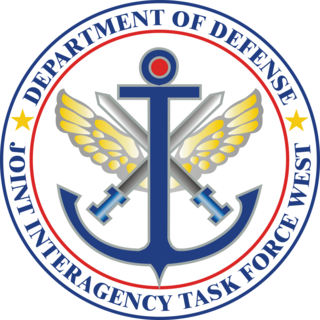
Joint Interagency Task Force West is a standing United States military joint task force with the mission of combating drug-related transnational organized crime in the Indo-Asia-Pacific. JIATF West's area of responsibility (AOR) is that of United States Indo-Pacific Command (USINDOPACOM). JIATF West is one of two Joint Interagency Task Forces with a counter-narcotics mission. The other is Joint Interagency Task Force South. The task force is run as USPACOM's "executive agent" for counterdrug activities providing support to partner nation law enforcement. Approximately 100 active duty and reserve U.S. military forces; Department of Defense civilian employees; contractors; and U.S. and foreign law enforcement agency personnel are members of the task force.

The 224th Joint Communications Support Squadron, located in Brunswick, Georgia, provides deployable tactical communications for Joint Task Force (JTF) Headquarters and Joint Special Operations Task Force (JSOTF) Headquarters. It can operate in environments without a reliable terrestrial network. The squadron operationally reports to the Joint Communications Support Element of the Joint Enabling Capabilities Command—a direct reporting unit of U.S. Transportation Command—at MacDill Air Force Base, Florida.

USCGC Hamilton (WMSL-753) is the fourth Legend-class cutter, also known as the National Security Cutter (NSC), of the United States Coast Guard. She is the fifth cutter named after Founding Father Alexander Hamilton, who was the first United States Secretary of the Treasury and in that position requested the formation of the United States Coast Guard. The cutter's sponsor is Linda Kapral Papp, the wife of Coast Guard Commandant Robert J. Papp, Jr.
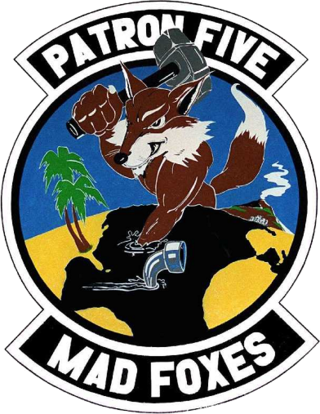
Patrol Squadron FIVE (VP-5) is a long-lived maritime patrol squadron of the United States Navy. It is the second squadron to bear the VP-5 designation. VP-5 is the second oldest patrol squadron, the fourth oldest in the United States Navy, and the 33rd oldest squadron in the United States military. As of 2019, VP-5 is still active and is based at Naval Air Station Jacksonville, Florida.
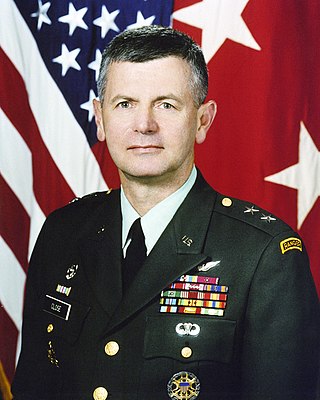
Major General George Francis Close, Jr. is a retired senior US Army officer, currently acting as a senior corporate and government executive. He has been recognized for leading and developing organizations in the US, Middle East, and in major strategic military commands.
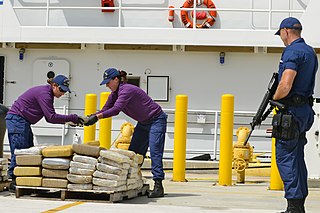
Operation Martillo is an ongoing multi-national anti-drug operation that began on 15 January 2012, and "aims to combat international drug trafficking, and promote peace, stability in Central and South America", according to the U.S. Southern Command, as one of the public institutions involved in it. It is a defense project led by the United States Southern Command with help of multi-national forces from Latin American and European countries. News coverage of their activities and results began in 2012, but mainly from defense-focused media.

Donna L. Cottrell is a retired United States Coast Guard rear admiral who last served as the Coast Guard District 9 Commander. In this role, she served as the senior Commander for the Great Lakes and Saint Lawrence Seaway, an area that covers eight states. The Area of Operations for the command accumulates over 6,700 miles of shoreline and 1,500 miles of international shoreline with Canada. In addition, she previously oversaw the service level command, Helicopter Interdiction Tactical Squadron (HITRON) out of Jacksonville, FL.



















